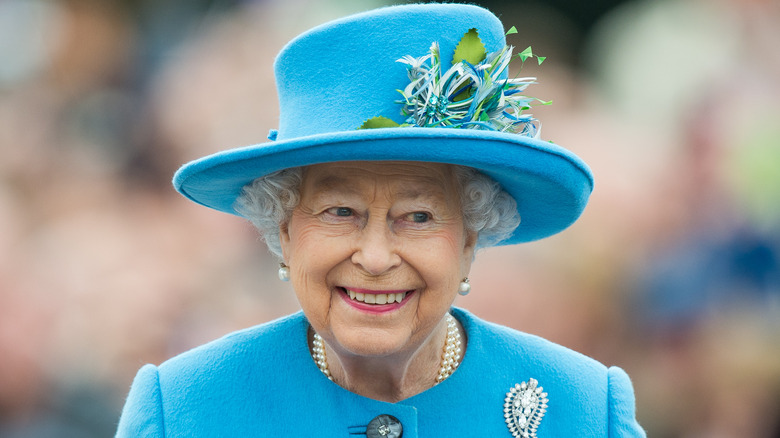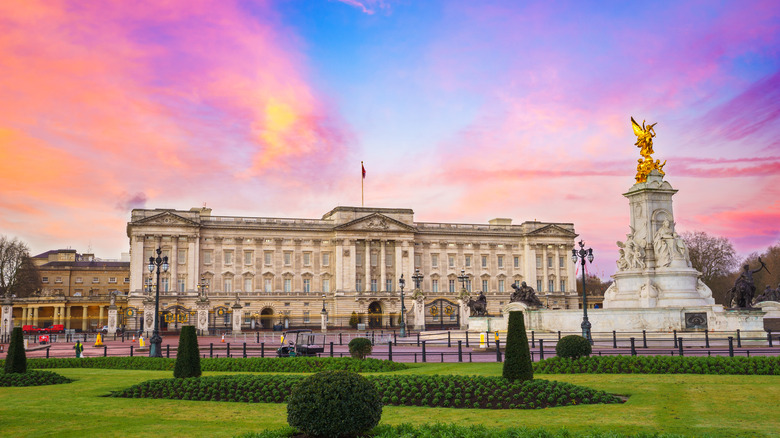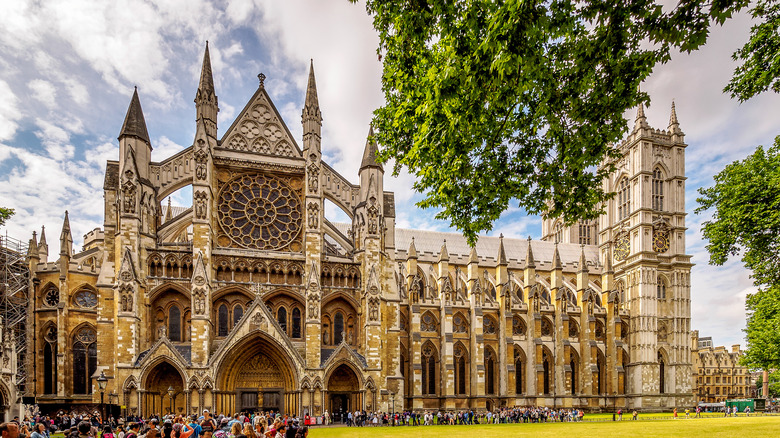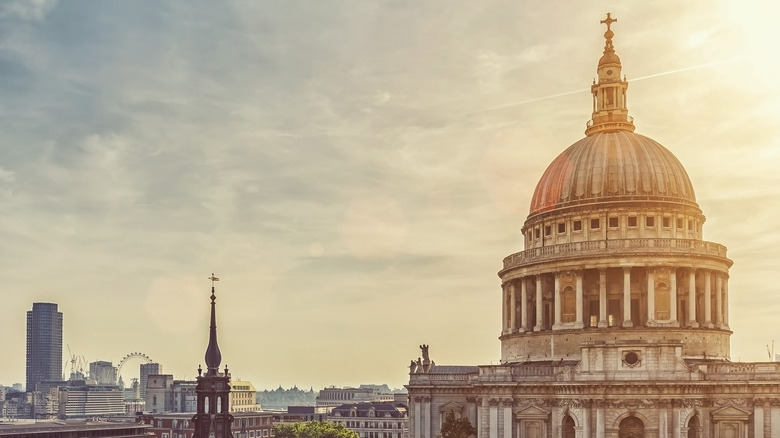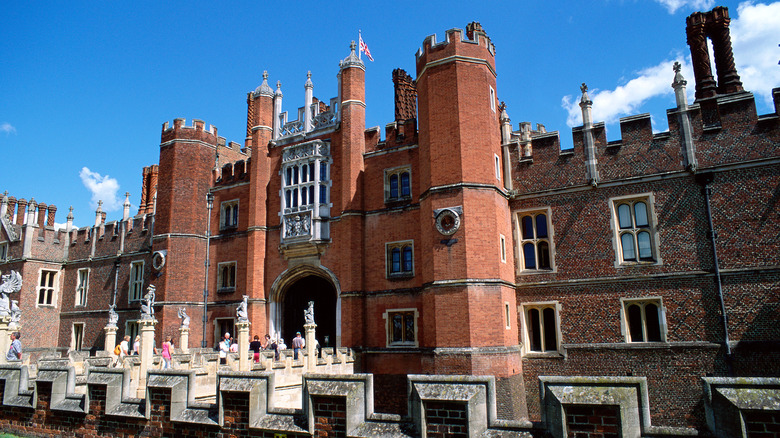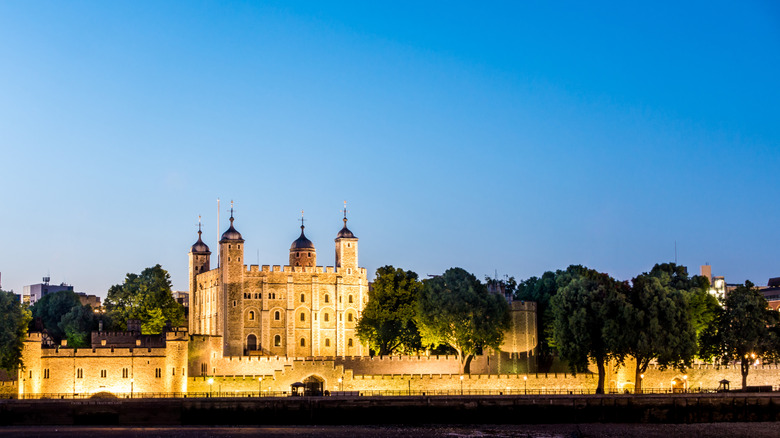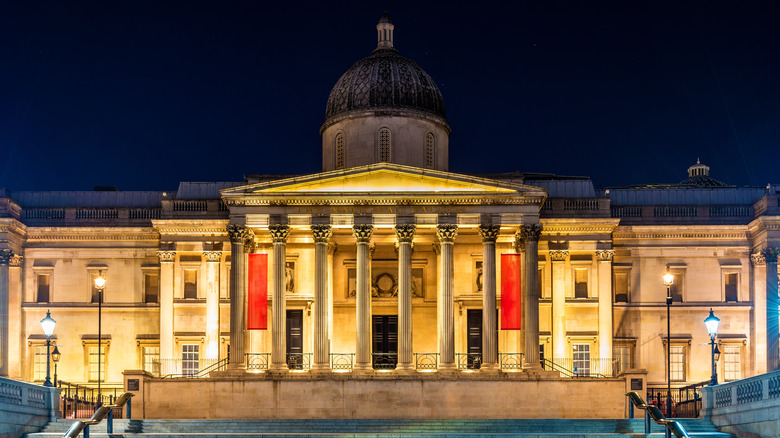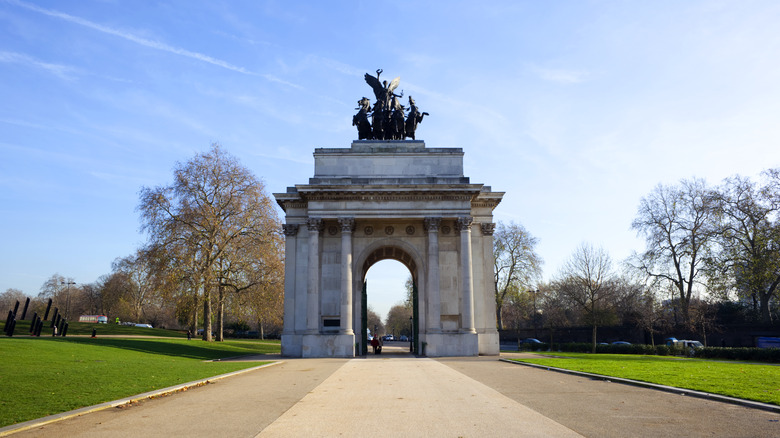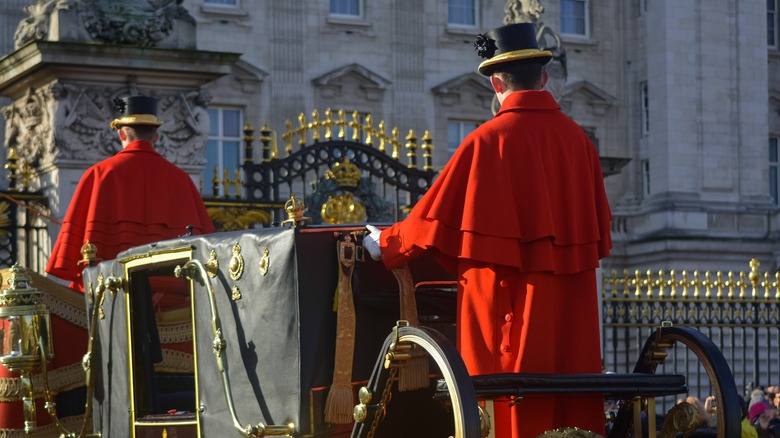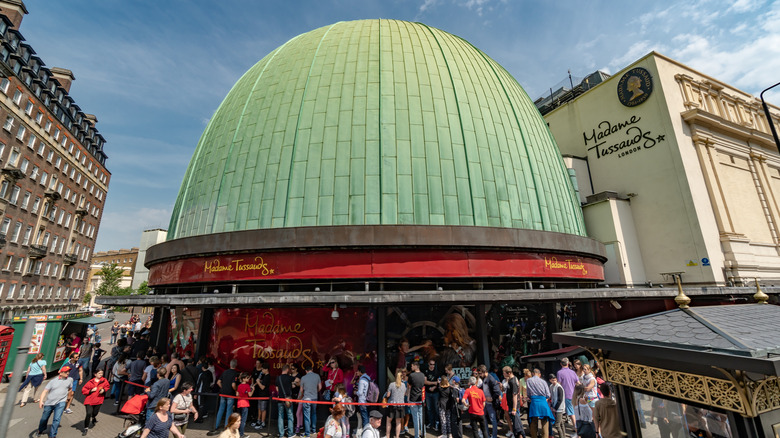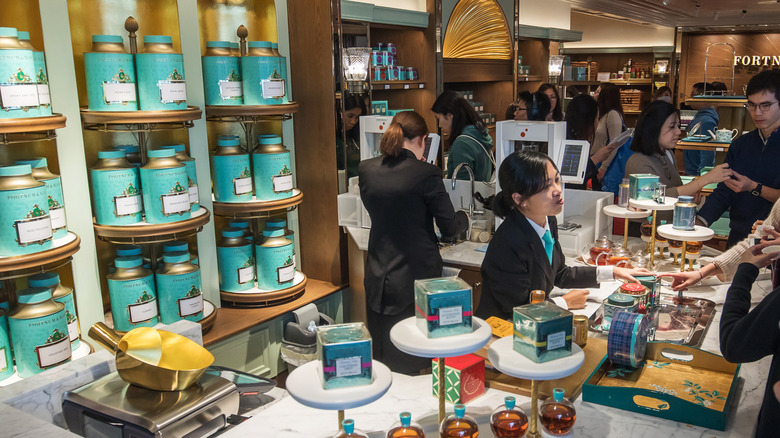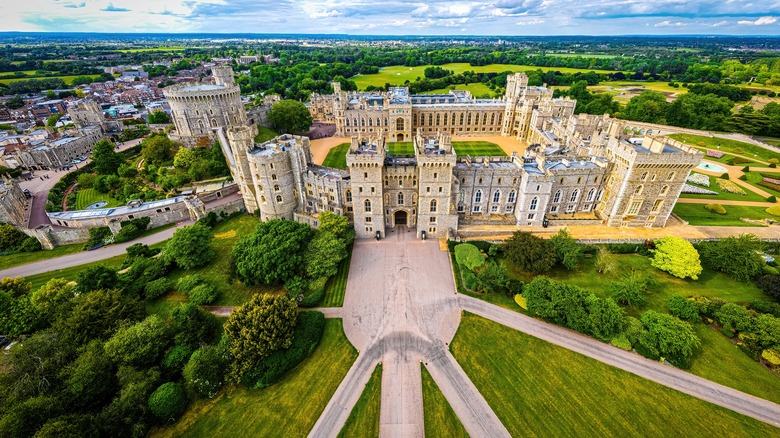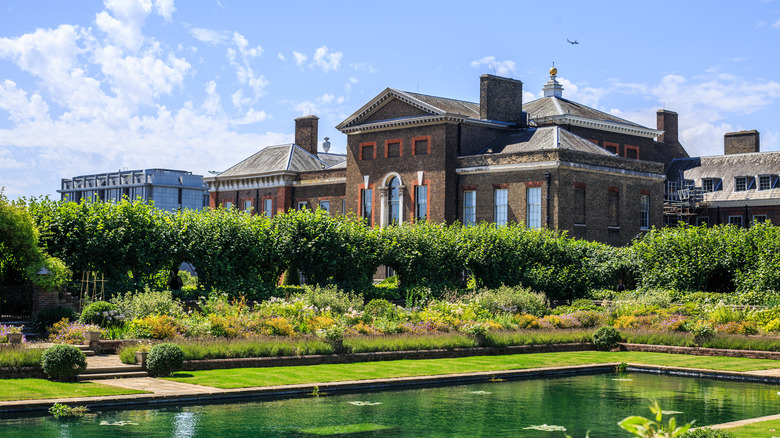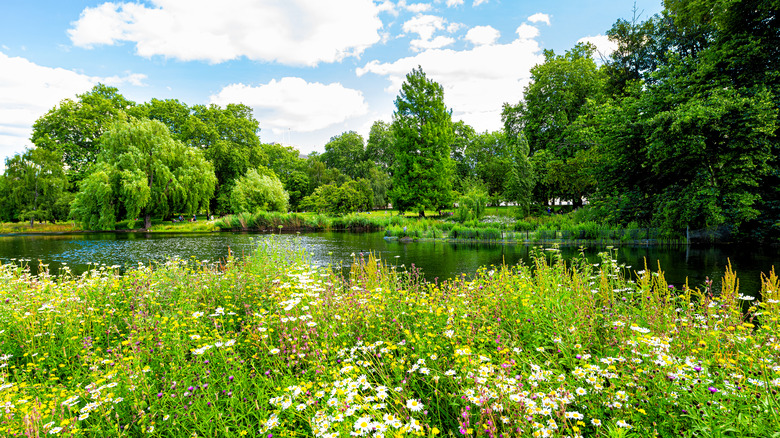13 Places To Visit In Britain If You Love The Royal Family
Great Britain is known for its historic landmarks, beautiful gardens, and passionate sporting culture, yet no other icon is more closely associated with the country than the royal family. For centuries, the world has been fascinated by the lifestyles of kings and queens, from where they live to what they like to eat, but the British royal family remains one of the most recognizable monarchies in the world.
Along with the world's interest, the monarchy's appeal within the United Kingdom is also apparent. Throughout the U.K., there are museums, castles, landmarks, and gardens dedicated to the monarchy, which celebrate the royal family's history and legacy.
While it may seem like royal residences and gilded carriages would be off-limits to the average tourist, it's perfectly possible to get a taste of royal life during your next visit to Britain. Whether you're looking for a history lesson or a spot of the Queen's favorite tea, there are plenty of places to visit if you love the royal family.
Buckingham Palace
Buckingham Palace is a working royal palace and the King's official residence. Built in 1825, Buckingham Palace was commissioned by King George IV who asked architect John Nash to design a grand palace fit for a king within the city of London.
The "palace fit for a king" has a total of 775 rooms, many of them filled with paintings by Old Masters and rare antiques. While the private living quarters are off-limits to visitors, a tour does include the 19 staterooms where the royal family entertains. The White Drawing Room is the grandest of all staterooms, with gilded ceilings and white pilasters; it is frequently the setting for pre-dinner gatherings. The largest is the Ball Room, completed in 1855 during Queen Victoria's reign. It is the setting for concerts and state banquets. The Throne Room holds the two coronation chairs originally commissioned for Queen Elizabeth and Prince Phillip, but they were most recently used for the coronation of King Charles and Queen Camilla.
Buckingham Palace is only open for 10 weeks a year from late July through September while the King is at Balmoral in Scotland on summer holiday. Still, the palace often holds special events for ticket holders throughout the year.
Westminster Abbey
As one of the country's greatest landmarks, Westminster Abbey is a cathedral with 1,000 years of history, much of it tied to the royal family. Originally built as a Benedictine monastery, Westminster Abbey was rebuilt in 1065 by Edward the Confessor, and later rebuilt by King Henry III between 1220 and 1272. Designed in the Gothic style, the cathedral is recognized worldwide as an architectural masterpiece.
Westminster Abbey has been the site of every coronation since 1066, as well as the setting for numerous royal occasions. The Abbey held state funerals for both Queen Elizabeth II, as well as Princess Diana, and was the site of the 2011 wedding of Prince William of Wales and Princess Catherine. Westminster Abbey is also the burial site of more than 3,000 prominent Great Britons, including many royals. Queen Anne, Edward the Confessor, Mary Queen of Scots, and Queen Elizabeth I are all buried here.
St. Paul's Cathedral
Designed by famous architect Sir Christopher Wren, St. Paul's Cathedral in London is a city icon that has been hosting cultural and religious events since 1665. The Baroque-style cathedral sits on Ludgate Hill, the highest point in the city of London. At 365 feet, its dome is one of the highest in the world, and the cathedral was the tallest building in London until 1963. The prominent dome and surrounding church spires are some of the most recognized landmarks in London.
St. Paul's Cathedral is an Anglican cathedral and serves as the seat of the Bishop of London. The cathedral has hosted many prominent religious services, including the state funerals of Margaret Thatcher and Sir Winston Churchill. Both Queen Victoria and Queen Elizabeth II celebrated their Jubilee Services at the cathedral. The wedding of King Charles and Princess Diana was also celebrated at the cathedral in July 1981, which was one of the most-watched television events in history.
As a working cathedral, St. Paul's hosts daily Anglican services, but visitors can purchase tickets for private and self-guided tours. Highlights include The Grand Organ, which has operated since 1695, the throne of the Bishop in the Quire, and The American Memorial Chapel, dedicated to the 28,000 Americans who lost their lives in Britain during World War II.
Hampton Court Palace
Famous for its extensive gardens and maze, Hampton Court Palace is a Tudor masterpiece that has hosted royals since the early 16th century. Originally commissioned by Cardinal Wolsey, Hampton Court caught the attention of King Henry VIII, who eventually made it his home, bringing all six of his wives here.
Henry VIII used the palace as a place to entertain, and its grand design was considered both modern and ostentatious at the time. The centerpiece of the palace is The Great Hall, a towering space designed by Henry VIII that was meant to convey his power. Boasting a magnificent hammerbeam roof, the Great Hall contains artifacts like Anne Boleyn's coat of arms. Many historic events occurred at the palace, including the divorce of Henry VIII and Anne of Cleves. He also married his wife Catherine Howard at the palace.
The palace also served as a working royal residence until the 19th century, when Queen Victoria decided to open it to the public in 1838. Today, visitors can tour the palace, its grounds, and its ornate chapel. One of the most popular sites of Hampton Court is the garden hedge maze. Originally commissioned in the early 1700s, it is the oldest surviving hedge maze in Great Britain.
Tower of London
While Hampton Court Palace was the location of everyday life for Tudor-era royals, the Tower of London is where some Tudor royals met their end. Built in 1070 by William the Conquerer, the Tower of London was built as a fortress-like structure designed to defend London against its enemies. A mighty stone tower sits as its centerpiece and the structure took 20 years to build with stone imported from France. For the next two centuries, the Tower was expanded to include a defensive wall, an armory, and a national mint. The Tower of London was frequently used to house royals and their precious possessions during times of distress.
The Tower of London has been the site of many tragedies involving the royal family. It is where both Anne Boleyn and Lady Jane Grey spent their final days before execution; it is also where two princes, the children of Edward IV, would perish during the War of the Roses.
Throughout history, the Tower of London has served as a fortress, palace, and prison. Today, it remains one of London's most popular attractions. Visitors can tour the Tower and view its collection of armor or meet one of the 37 Yeoman Warders, also known as Beefeaters, who guard the Tower. The most secure and highly protected wing of the Tower is the Jewel House, which contains more than 23,000 gemstones, including precious tiaras, necklaces, and other gems that make up the official Crown Jewels.
National Portrait Gallery
Established in 1856 by Lord Ellesmere, the National Portrait Gallery is located in the heart of London near Trafalgar Square. One of London's best museums for art-lovers, the gallery has more than 22,000 works and houses the most extensive portrait collection in the world. Recently reopened after a three-year refurbishment, it has thousands of portraits of prominent Britons, from historical leaders like Winston Churchill to contemporary figures like Elton John and David Bowie.
The National Portrait Gallery holds official portraits of every prominent member of the royal family and has extensive collections from the Tudor, Elizabethan, Edwardian, and Victorian reigns. The gallery also contains the official portraits of every modern royal, including King Charles, Kate Middleton, and Prince William. A popular site for tourists, visitors can take guided tours or view rotating exhibitions of British arts and culture. Most recently, the gallery hosted a collection of photography and a Beatles retrospective by Sir Paul McCartney.
Hyde Park
London's most famous park was originally founded by the monks of Westminster Abbey until Henry VIII purchased it to use as his hunting grounds. It remained a private park until Charles I permitted the public to access it in 1637. Throughout the park, you can find monuments and statues dedicated to the royal family. The Diana Memorial Fountain, unveiled by Queen Elizabeth in 2004, is built of Cornish granite and is designed to reflect the ebb and flow of Princess Diana's life. The Queen Elizabeth Gates in Hyde Park was designed to honor Queen Elizabeth, the Queen Mother. They were unveiled in 1993 and feature a whimsical design of a lion and a unicorn, representing England and Scotland.
The park's winding paths, lake, and gardens are a popular outing in central London any time of year. At Speakers Corner, visitors can see where radicals used to "get on their soapbox" and preach about everything from politics to religion. The centerpiece of the park is The Serpentine Lake, where visitors can rent paddle boats or dine at the boat house. In the winter, Hyde Park turns into a winter wonderland, with an ice rink, food stands, and a Santaland with carnival rides. Visiting the park is a must-do in London at Christmas.
The Royal Mews
Ever dreamed of seeing a real gilded carriage fit for royalty? At The Royal Mews, a working stable and museum adjacent to Buckingham Palace, you can. The Royal Mews is responsible for all road travel for the King and the Royal Family, from horse and carriage ceremonies to official car processions. The organization has been around since the 14th century, and its headquarters was built in the gardens of Buckingham Palace in 1825.
A visit to the Mews might include seeing one of the stable's Cleveland Bay or Windsor Grey horses, or trying out a replica open carriage like the one Queen Victoria used. Visitors can also see the livery worn by the King's coachmen or learn how to tack a horse on a wooden pony. The real draw, however, is the fleet of carriages used to carry the royal family throughout history, including the 260-year-old Gold State Coach. The coach features gilded woodwork, intricately carved sculpture, and painted panels of Roman gods and goddesses. Weighing over four tons, the carriage has been used to transport the monarchy in every coronation since that of William IV. As a note, The Royal Mews is closed until March 1, 2024.
Madame Tussaud's
It is possible to get close to members of the royal family — wax versions, that is. The world-famous Madame Tussauds wax museum in London is home to 150 lifelike figures, including members of Britain's royal family. The museum's Royal Palace exhibit includes a throne room with wax figure renderings of every major royal, including the Prince and Princess of Wales, Queen Elizabeth, King Charles, and Queen Camilla.
Open since 1884 on Baker Street in London, Madame Tussauds is a London institution that not only offers a lighthearted look at the world's most famous faces, but the museum has the direct support of the monarchy. The museum's Queen Elizabeth figure is the 23rd incarnation the museum has created throughout her historic 70-year reign. During its creation, Madame Tussauds' sculptors collaborated with Buckingham Palace by providing images of the clay sculptures as they were in progress to create the most authentic and lifelike incarnation of "Her Majesty."
Fortnum and Mason
London's most famous tea shop, Fortnum and Mason, has had a long and storied relationship with the royal family since it was first established in 1707. Founder William Fortnum was originally a footman for Queen Anne. He later established his tea shop with Hugh Mason, and the two would go on to create a culinary empire that still provides tea to the royal family today. The flagship store in Picadilly sells everything from the Royal Blend tea to Sandringham coffee blend and has held a Royal Warrant (products approved by the monarchy) since 1910.
Queen Elizabeth, the Queen Mother, was known to do her Christmas shopping annually in person at the store, and every modern royal has visited the shop in recent years. Queen Elizabeth, Queen Camilla, and Princess Catherine all visited together in 2012 for the opening of the store's Diamond Jubilee Tea Salon. Today, thousands of tourists and shoppers visit the store to purchase tea, coffee, and gourmet food as well as the shop's famous Christmas hampers. One can also enjoy a traditional afternoon tea in London in the tea salon where treats like cucumber sandwiches, scones, and pastries are served on the store's iconic blue plates.
Windsor Castle
The oldest occupied castle in the world, Windsor Castle has been home to 40 monarchs. Built by William the Conquerer in the 11th century, Windsor Castle was built high on the River Thames at the edge of hunting grounds. It was designed to serve as a military fortification to guard the western approach to London. King Edward II began converting it into a royal residence in the 14th century.
Windsor Castle remained a preferred residence of royals for centuries and was the favored respite of Queen Victoria, who spent much of her reign here. Today, visitors can see the castle's state apartments or view attractions like Queen Mary's doll house. The Grand Reception Room contains real gold chandeliers and gilded ceilings; as the most luxurious room in the castle, it was Queen Elizabeth II's favorite room to entertain guests.
Another highlight of Windsor Castle is St. George's Chapel, located within the castle grounds. St. George's Chapel is the burial place of 11 monarchs, including Henry VIII, Charles II, and most recently, Queen Elizabeth II. The chapel has also been the site of several royal weddings, including the Duke and Duchess of Sussex, as well as The Earl and Countess of Wessex. A worthwhile day trip destination from London, Windsor Castle is located about an hour from the city.
Kensington Palace
Originally built as a modest home known as Nottingham House, Kensington Palace started out as the country retreat of King William in 1687 and was gradually expanded over the years to become the palace that stands today. It was the birthplace of Queen Victoria, who spent most of her childhood here until she moved to Buckingham Palace. Kensington Palace has been home to many royals over the years, including Princess Margaret and Princess Diana. It currently serves as the official London residence of the Duke and Duchess of Wales and their three children.
Visitors to Kensington Palace can see the King's and Queen's State Rooms, as well as a permanent exhibition on the life of Queen Victoria. The exhibit offers a glimpse of her reimagined childhood rooms, as well as her collection of jewelry gifted to her by her beloved husband Albert. Kensington Palace is surrounded by expansive gardens, including the Sunken Garden, an all-white garden dedicated to the memory of Princess Diana. The garden features a statue of the late Princess with her sons, William and Harry. The statue was unveiled in 2017 on what would have been the Princess of Wales' 60th birthday.
The palace museum is open year-round and also hosts seasonal exhibits highlighting the fashion, decor, and history of the royal family. The Orangery at Kensington Palace serves traditional afternoon tea daily, and the palace shop sells an extensive collection of royal-inspired merchandise.
St. James Park
Similar to Hyde Park, Henry VIII originally acquired St. James Park in 1532 to serve as royal hunting grounds. St. James Park is London's oldest Royal Park and one of its most beautiful. The park is bordered on all sides by The Mall, Green Park, Buckingham Palace, and Whitehall. It is also adjacent to Birdcage Walk, the site of the Churchill War Rooms. Listed on the Register of Historic Parks and Gardens, the park is laid out in a series of gardens surrounding a small lake. The lake is home to various waterbirds, including the park's famous pelicans, which were introduced as a gift from a Russian ambassador to King Charles II in 1664.
St. James Park's location near The Mall offers an ideal viewing site for royal processions and historical celebrations that occur along the route to Buckingham Palace. It also provides views of The Changing of the Guard from its northern entrance, and from the Blue Bridge, which spans the lake at the center of the park, you can enjoy picture-perfect views of the London Eye and Buckingham Palace.
